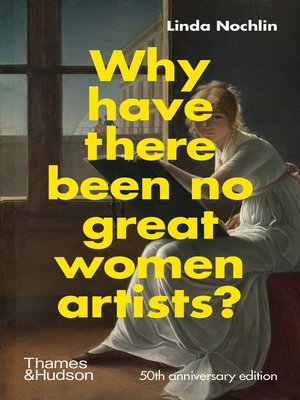
Nochlin refused to handle the question of why there had been no great women artists on its own, corrupted, terms. Written in an era of thriving feminist theory, as well as queer theory, race and postcolonial studies, ‘Thirty Years After’ is a striking reflection on the emergence of a whole new canon. Linda Nochlins seminal essay on women artists is widely acknowledged as the first real attempt at a feminist history of art. In this stand-alone anniversary edition, Nochlin’s essay is published alongside its reappraisal, ‘Thirty Years After’. Freedom, as she sees it, requires women to risk entirely demolishing the art world’s institutions, and rebuilding them anew – in other words, to leap into the unknown. With unparalleled insight and startling wit, Nochlin laid bare the acceptance of a white male viewpoint in art historical thought as not merely a moral failure, but an intellectual one. Instead, she dismantled the very concept of ‘greatness’, unravelling the basic assumptions that had centred a male-coded ‘genius’ in the study of art.

It is noted for its contribution to feminist art.

Nochlin refused to handle the question of why there had been no ‘great women artists’ on its own, corrupted terms. Why Have There Been No Great Women Artists is a 1971 essay by American art historian Linda Nochlin.

Linda Nochlin’s seminal essay on women artists is widely acknowledged as the first real attempt at a feminist history of art. For many years the Australian art establishment had rejected modernism which may be why so many modernist artists were women, making art that was rejected for its style, not the gender of.


 0 kommentar(er)
0 kommentar(er)
